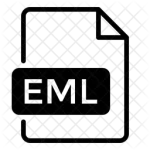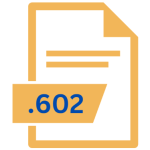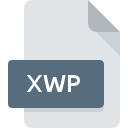.GV File Extension

Graphviz DOT File
| Developer | AT&T |
| Popularity | |
| Category | Text Files |
| Format | .GV |
| Cross Platform | Update Soon |
What is an GV file?
The .GV file extension is primarily associated with Graphviz, an open-source graph visualization software developed by AT&T Labs.
These files contain textual representations of graphs, diagrams, or networks, which can be rendered and visualized using Graphviz or other compatible software.
More Information.
Graphviz was created to simplify the generation of graphs and diagrams in various fields, including computer science, data analysis, and network visualization. It was used internally at AT&T for drawing complex software dependency graphs.
The utility of Graphviz quickly spread to other domains, such as bioinformatics, social network analysis, and system architecture visualization.
The .GV file extension was designed to provide a straightforward, yet powerful, way to define graphs and their properties.
Users could create .GV files using a simple and human-readable syntax, making it accessible to both beginners and experts.
Origin Of This File.
The .GV file format was born out of the need for a standard, human-readable format to represent graphs and networks.
Graphviz was initially developed by Stephen North at AT&T Labs in the early 1990s to automate the process of graph layout and visualization.
The .GV file extension was introduced as the default file format for storing graph definitions in Graphviz.
File Structure Technical Specification.
A .GV file is essentially a plain text file that follows the Graphviz DOT language syntax. This syntax consists of a set of rules and conventions for specifying nodes, edges, attributes, and other graph-related elements. Let’s take a closer look at the key components of a .GV file:
- Graph Declaration: The file typically begins with a declaration specifying the type of graph (e.g., digraph for directed graphs or graph for undirected graphs).
- Nodes and Edges: Nodes and edges are defined within the graph using a specific syntax. For example, nodes are represented as labels enclosed in square brackets (NodeLabel).
- Attributes: You can assign various attributes to nodes, edges, and the entire graph. These attributes control how the graph is rendered, including properties like colors, shapes, and labels.
- Comments: Lines beginning with a hash (#) are treated as comments and are ignored by the parser. Comments allow users to add explanatory notes within the .GV file.
- Layout Instructions: Users can specify layout instructions to control the arrangement of nodes and edges in the resulting graph. Layout attributes include options for node placement, rank direction, and more.
- Subgraphs: .GV files can define subgraphs, which are used to group nodes and edges together within a larger graph.
How to Convert the File?
Converting .GV files (Graphviz DOT files) to other formats is a common task when you need to share or use your graphs in different applications. Here are the steps to convert a .GV file into various formats:
Using Graphviz Software:
- Install Graphviz: Download and install Graphviz from the official website for your operating system.
- Open Terminal/Command Prompt: Launch a terminal or command prompt.
- Navigate to File Location: Use
cdto go to the directory containing your .GV file. - Convert .GV File: Use
dotor other Graphviz utilities to convert the file. For example, usedot -Tpng input.gv -o output.pngto convert to PNG. - Check Output: The converted file will be in the same directory. Open it with the appropriate software.
Using Online Converters:
- Open a Browser: Launch your web browser.
- Search for Converter: Search “GV to desired format converter” online.
- Select an Online Converter: Choose a reliable one from the search results.
- Upload .GV File: Use the website’s interface to upload your .GV file.
- Choose Output Format: Select the format you want to convert to (e.g., PNG, PDF).
- Start Conversion: Click “Convert” or “Start” to begin the conversion.
- Download Converted File: Once done, download the converted file from the provided link.
- Check Output: Open and view the converted file using appropriate software.
Advantages And Disadvantages.
Advantages:
- Human-Readable: .GV files use a straightforward syntax that is easy for humans to read and write, promoting accessibility and collaboration among users.
- Platform-Independent: Since .GV files are plain text, they can be created and edited on virtually any operating system and opened using various text editors.
- Extensibility: The DOT language supports a wide range of attributes and customization options, allowing users to create highly tailored and visually appealing graphs.
- Integration: .GV files can be easily integrated into software applications and workflows, making them valuable for automated graph generation and analysis.
Disadvantages:
- Limited Compatibility: While Graphviz is a popular tool for working with .GV files, compatibility with other graph visualization tools may be limited, requiring conversion or adaptation.
- Performance Issues: Generating large and complex graphs from .GV files can be computationally intensive and may require significant processing power.
- Learning Curve: Mastering the syntax and nuances of the DOT language may take time, particularly for beginners.
How to Open GV?
Open In Windows
- Text Editors: Right-click on the .GV file, choose “Open with,” and select a text editor like Notepad or Notepad++.
- Graphviz Software (Visualization): Install Graphviz for Windows, use Command Prompt, navigate to the file’s directory, and use Graphviz’s command-line utilities to visualize the graph.
Open In Linux
- Text Editors: Open a terminal, navigate to the file’s directory, and use a text editor like Vim to open the .GV file.
- Graphviz Software (Visualization): Install Graphviz using your package manager, and use the command-line utilities to visualize the graph.
Open In MAC
- Text Editors: Right-click on the .GV file, choose “Open with,” and select a text editor like TextEdit.
- Graphviz Software (Visualization): Install Graphviz for macOS, open Terminal, navigate to the file’s directory, and use Graphviz’s command-line utilities for visualization.
Open In Android
- Text Editor Apps: Download a text editor app (e.g., QuickEdit Text Editor) from the Google Play Store. Open the app, locate the .GV file, and tap to open and edit it.
- Online Viewers (Visualization): Use a web browser on your Android device to access online graph visualization tools and upload your .GV file for graph viewing.
Open In IOS
- Text Editor Apps: Download a text editor app (e.g., Textastic Code Editor) from the App Store. Open the app, locate the .GV file, and tap to open and edit it.
- Online Viewers (Visualization): Use a web browser on your iOS device to access online graph visualization tools and upload your .GV file for graph viewing.
Open in Others
- Text Editors: Use text editors that support plain text files for viewing and editing.
- Online Viewers: Consider using cross-platform online graph visualization tools accessible through web browsers for viewing graphs on less common or specialized platforms.













